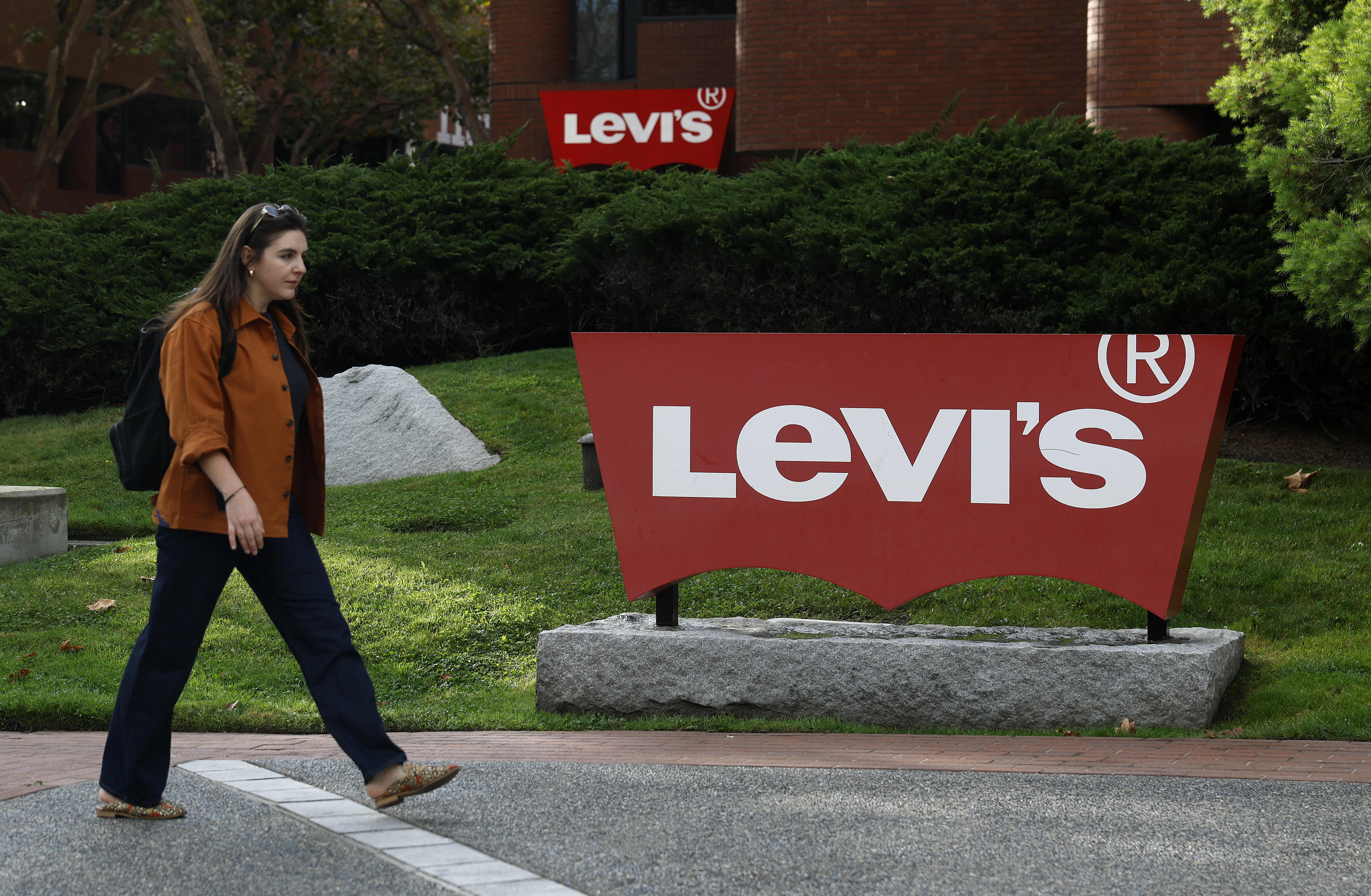Levi Strauss Boosts Prices, Driving Stronger Profits and Upgraded Full-Year Outlook
Levi Strauss Boosts Prices, Driving Stronger Profits and Upgraded Full-Year Outlook
By
Rachel Steinberg
Last updated:
October 10, 2025
First Published:
October 10, 2025

A pedestrian walk by sign is posted in front of Levi Strauss headquarters on Oct. 9, 2025 in San Francisco, California. | Justin Sullivan | Getty Images
Levi Strauss reported better-than-expected quarterly results, driven by strategic price hikes and a growing focus on direct-to-consumer sales. The company’s gross margin rose to 61.7%, up 1.1 percentage points from the same period last year and above analysts’ expectations of 60.7%, highlighting the effectiveness of its pricing and sales strategies.
Strong Profit Growth Despite Tariffs
During the fiscal third quarter, Levi Strauss posted a net income of $218 million, or 55 cents per share, compared with $20.7 million, or 5 cents per share, in the same period last year. Adjusted earnings came in at 34 cents per share, surpassing the 31 cents per share anticipated by Wall Street. Revenue rose 7% year-over-year to $1.54 billion, exceeding the $1.50 billion expected.
CEO Michelle Gass emphasized the company’s careful approach to pricing:
“As we’ve been taking these targeted actions, we’ve not seen an impact to demand. We’re taking a surgical, thoughtful approach on pricing while staying true to our brand’s value and quality.”
Finance Chief Harmit Singh added that most revenue growth is coming from strong consumer demand, not just price increases, underlining the enduring popularity of Levi’s products.
Direct-to-Consumer Strategy Boosts Margins
Levi Strauss is increasingly selling through its own stores and online channels rather than relying on wholesalers. Direct-to-consumer revenue grew 11%, fueled by strong performance in the U.S., while women’s apparel sales rose 9%, reflecting the brand’s expansion beyond jeans.
The company also reported that non-denim items, including tops and outerwear, now account for nearly 40% of total sales, with tops alone up 9% during the quarter. This diversification is helping Levi’s hedge against changing fashion trends and increasing margins, as direct sales carry higher profitability than wholesale channels.
Pricing and Tariffs
Levi Strauss has raised prices on select items in the U.S. and plans to continue doing so next year. These targeted increases have boosted profitability while maintaining strong demand, according to Gass.
The company’s updated outlook assumes U.S. tariffs on imports from China remain at 30% and rest-of-world duties at 20% for the remainder of the year. Levi now expects full-year revenue growth of 3%, up from a prior guidance range of 1–2%, significantly surpassing analysts’ forecast of a 2.9% decline.
Adjusted full-year earnings per share are projected at $1.27 to $1.32, compared with the previous estimate of $1.25–$1.30, aligning with Wall Street expectations of $1.31 per share. The company anticipates an operating margin of 11.4–11.6% and a gross margin increase of 1 percentage point, returning to pre-tariff guidance.
Outlook and Consumer Trends
Despite ongoing macroeconomic uncertainty, Levi Strauss is maintaining a prudent and conservative approach for the remainder of the fiscal year. Analysts note that the brand’s strategy of expanding beyond jeans, growing women’s apparel, and focusing on direct sales channels has positioned it for sustainable growth, even in a competitive retail landscape.
Shares of Levi Strauss, however, fell more than 6% in after-hours trading despite strong results, after gaining 42% year-to-date through the reporting period. Investors appear cautious, possibly weighing macro challenges, inflationary pressures, and retail sector volatility.
Levi Strauss’ performance reflects the resilience of a heritage brand adapting to modern consumer preferences, leveraging pricing strategy, channel optimization, and product diversification to maintain strong growth while navigating tariffs and global economic pressures.
This quarter reinforces Levi Strauss’ position as a leader in premium denim and apparel, with momentum likely to continue into 2025 as the company balances profitability and consumer loyalty.
Popular articles
Subscribe to unlock premium content
Virtual Girlfriends, Real Money: Inside the Digital Love Economy

The Strange Economy of Internet Clout: Followers, Fame, and Fake Riches

Why Italy’s Small Family Businesses Outperform Silicon Valley Startups

Virtual Girlfriends, Real Money: Inside the Digital Love Economy

The Strange Economy of Internet Clout: Followers, Fame, and Fake Riches

Virtual Girlfriends, Real Money: Inside the Digital Love Economy









